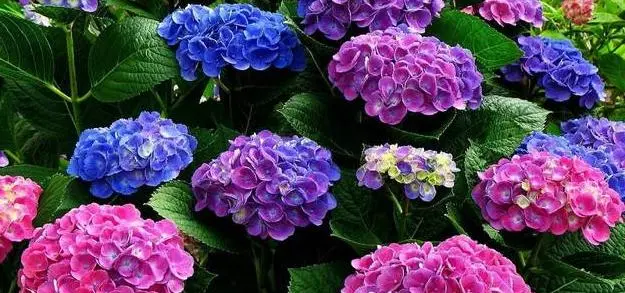To change the color of the hydrangea, you need to enrich the soil with sulfur and iron, and on one bush hydrangea flowers will be different colors.
Hydrangea: pink or blue?
If you want to make a pink hydrangea blue or purple, you need to enrich the soil with sulfur and iron. When these substances are applied unevenly, blue and pink inflorescences will appear on the hydrangea at the same time, which looks very beautiful. If you fertilize the soil only on one side of the bush, then half of the hydrangea bloom blue flowers, and the other – pink. Proven folk way to get a blue hydrangea: dig into the ground, around the plant, old rusty nails or other metal objects. Inflorescences can also turn blue if the plants have been planted in peat soil, but the blue color can acquire a dirty hue.
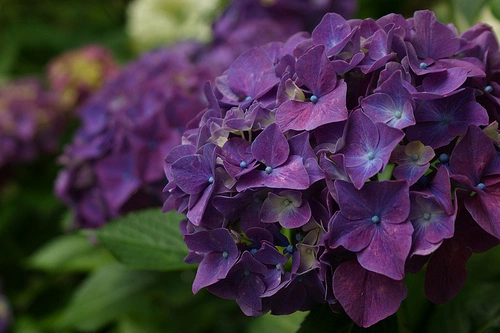
How to care for a hydrangea
Prepare the ground and plant hydrangeas
The best time to plant hydrangeas in open ground – spring, during bud burst. Planting holes are dug twice as deep (40-50 cm deep, 40 cm in diameter) and deeper than the size of the roots. If the soil is not fertile, the planting hole should be deeper; it is filled with fertile soil (humus and peat) with the addition of mineral fertilizers (50 g).
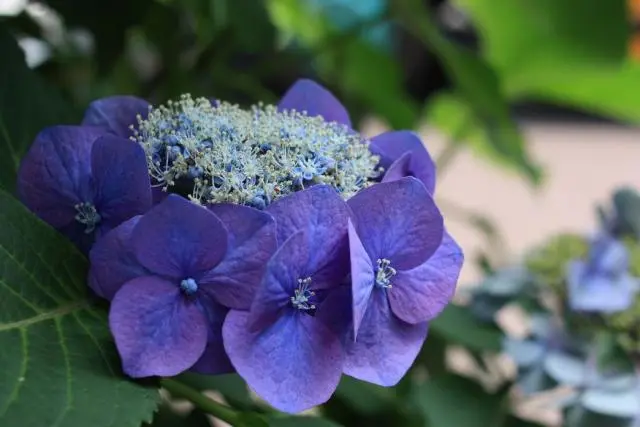
It is better to transplant hydrangeas, digging them with a lump of earth, broken branches cut with secateurs. In the center of the planting hole pour the soil, carefully spread the roots, directing it in different directions, cover with prepared soil to deepen the root collar, but not more than 2-3 cm, otherwise the plant will grow poorly.
The soil is compacted tightly around the bush so that air pockets are not formed in the root system, which will lead to drying of the roots, and when wet – to root rot. Then the bush is carefully watered so that the water seeps to a depth of 30-50 cm.
Mulching of hydrangeas
Mulching helps protect the roots of hydrangea plants from direct sunlight, overheating, suppresses weed growth. It is better to use organic mulch – it is cut grass, wood chips, bark, compost – sprinkled around the bush in a layer of up to 10 cm.
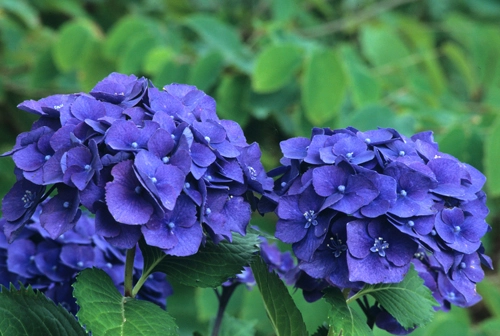
Feeding hydrangeas
For development, lush flowering, budding by next year, the hydrangea should be fertilized with organic and mineral fertilizers. In stores you can buy special fertilizers for hydrangeas, rich in magnesium and iron. Fed during the period of intensive growth and during flowering. The first feeding should be done in April with organic fertilizers (chicken manure, developing 1:10) and complex mineral fertilizers.
Re-feeding is carried out every two weeks – until August.
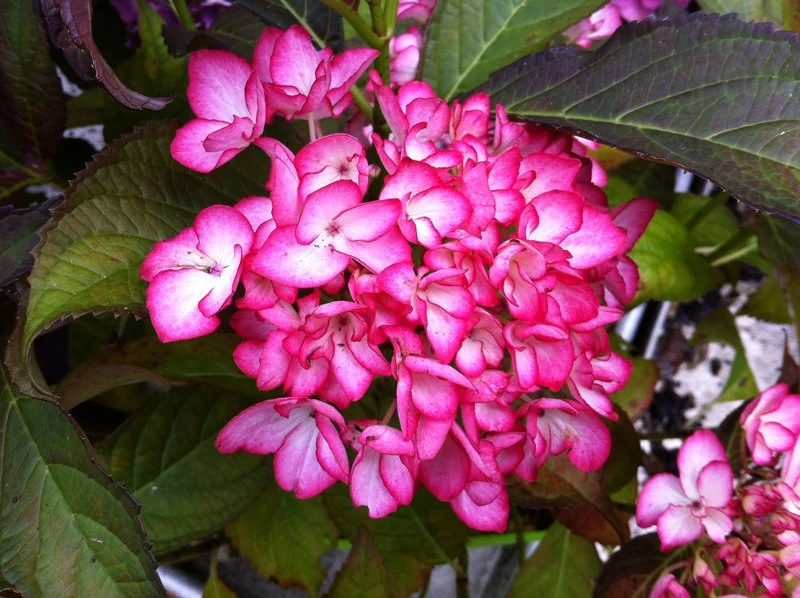
Pruning of hydrangeas
Pruning is an important part of hydrangea care. Annual pruning of hydrangeas allows you to adjust the height, density, number and size of inflorescences. Proper pruning of hydrangeas is to remove old inflorescences to the first pair of strong and healthy buds. Pruning strong and fast-growing hydrangea shoots promotes strong branching, for example: Hydrangea liana provides a thicker coating on the support or soil. Sargentina hydrangea is pruned to a height of 25-30 cm annually. Future inflorescences in hydrangea are laid on shoots in buds last year, so the shoots are pruned in early spring – in March. In adult and fast-growing plants cut 3/4 of the height of the shoot, leaving 2-3 pairs of buds.
You also need to cut frozen, weak and dry shoots. Dried hydrangea flowers not only decorate the garden in winter, but also protect the buds from frost.
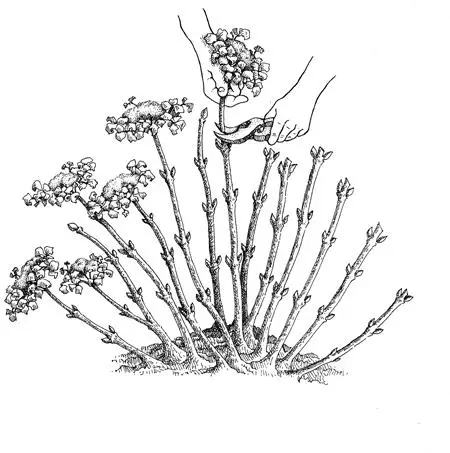
Warming of hydrangeas for the winter
As mentioned above, in hydrangeas future inflorescences are laid on shoots in the buds of last year. To protect the plant from frost, you need to insulate it for the winter. Insulation method:
Root mulching with leaves, straw, sawdust, a small layer of earth. Mulching should be done in dry weather, immediately after the first frosts.
In more heat-loving species with flexible shoots, such as hydrangea deciduous, in the fall gently bend the shoots to the ground, pinned with hooks, covered with branches or fallen leaves.
To protect Sargentina hydrangea bushes with inflexible shoots from frost, the bush is wrapped with a covering material such as agricultural film.
In early spring (not earlier than mid-April), as soon as the danger of severe frosts, mulch and shelter should be removed.
Reproduction of hydrangeas
Hydrangea is easy to propagate. Propagated vegetatively by cuttings, dividing the bush, layering and seeds.
- Cuttings. The simplest method of vegetative propagation – cuttings. Cuttings are cut in May; from the shoot cut this year’s green twigs up to 15 cm long, leave 1.5 leaves, planted at an angle of 45 degrees in the sand or soil. After 1.5 months, the roots will appear. For the winter cover, transplant to a permanent place in 2 years.
- Dividing the bush. You can divide the bush in spring and autumn, and then planted in permanent places.
- Layering. Shoots are bent to the ground and dug, in the spring of next year the rooted shoot is separated and transplanted.
- Hydrangea seeds are more difficult to propagate.
Pests and diseases
In the open ground, the hydrangea is rarely infected by pests. It can be infected with spider mites and aphids. Due to the high content of lime or excess humus in the soil, the leaves become very light – chlorosis. Fungal diseases – powdery mildew.

